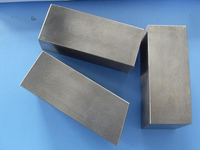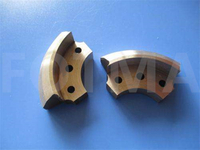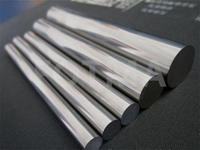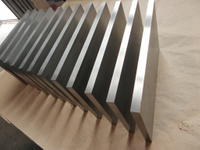Views: 3 Author: Site Editor Publish Time: 2020-06-16 Origin: Site
Tungsten carbide (WC) has excellent properties of high hardness, high strength, high rigidity, good wear resistance, and thermal conductivity. It has wide application files of tools in the metalworking, drilling, and mining industries under severe conditions of high-pressure, high-temperature, and corrosive environment. These mechanical properties is affected by the composition and microstructural parameters including the grain size. It is known that reduction of WC gives a significant improvement in the mechanical properties of the consolidated compacts. So, an efficient and useful production method of nanoscale WC powder is necessary.
Ammonium paratungstate (APT) is an important intermediate in the conventional process for the production of tungsten and WC powder. It is produced from the high-grade concentrates of wolframite or scheelite ore. In a subsequent process, tungsten oxides are produced from APT by calcination in an oxygen-bearing atmosphere between 560 °C and 850 °C. Tungsten and WC powders are then produced by reduction and/or carburization of tungsten oxides with hydrogen gas and methane.
A thermal plasma process was applied to the synthesis of nanosized tungsten carbide powder from APT. The procedures are as follows:
APT with average particle size of 40 um was used as the starting material. Hydrogen (99.9) and methane (99.9%) were used as the reducing and carburizing agents, respectively. A plasma reactor system consisting of a plasma generator with a downward plasma torch, a power supply unit, a cylindrical reactor, a cooling chamber, a cooling system, a precursor feeding system, a powder collector, a gas delivery system, an off gas scrubber, and an off gas exhaust system. The purpose of the scrubbing solution was to remove uncollected powder and to prevent back flow of the off gas. The plasma torch consisted of a water-cooled tungsten cathode and a copper anode nozzle operating at atmospheric pressure. The reactor consisted of a vertical water-cooled stainless-steel tube of 15 cm inner diameter and 60 cm length and an inner graphite cylinder of 7.6 cm inner diameter and 60 cm length. Graphite felt was placed between the graphite tube and the inner wall of the water-cooled stainlesssteel tube for the insulation of the reactor. The cooling chamber connected to the bottom of the reactor was a water-cooled two layer stainless-steel box to cool the outgoing gas to a temperature lower than 1500 °C. A data acquisition system recorded the temperatures of the reactor exit gas, the input and output cooling water, and outgoing gas from the cooling chamber. The precursor feeding system consisted of an entrained-flow powder feeder, a vibrator, a carrier gas line, a sample container, and a water-cooled delivery line through which the precursor was fed toward the outside boundary of the visible plasma flame (7-mm diameter) from a distance of 15 mm near the exit of the plasma torch.
Argon (99.9%) and hydrogen were used as the primary and the secondary plasma gas, respectively. Argon also separately passed through the powder feeder as the carrier gas as well as an inert gas to keep the atmosphere in the container inert. Before delivering the precursor into plasma flame, the reactor was heated by the plasma flame generated until its temperature reached a steady level. The mixture of CH4 and H2 also flowed through the precursor feeding system to carry APT powder into the plasma flame. The produced powder was collected and then analysed with XRD and TEM.
To sum up, nanoscale tungsten carbide powder was synthesized by a thermal plasma process using APT as the starting material. WC powder with a particle size less than about 100 nm. The thermal plasma process has been proved to be an efficient method to synthesis nanosized tungsten carbide, owing to the high temperature to rapidly volatilize APT powder, followed by vapor phase reaction and rapid quenching of the product to directly yield nanosized powder.





